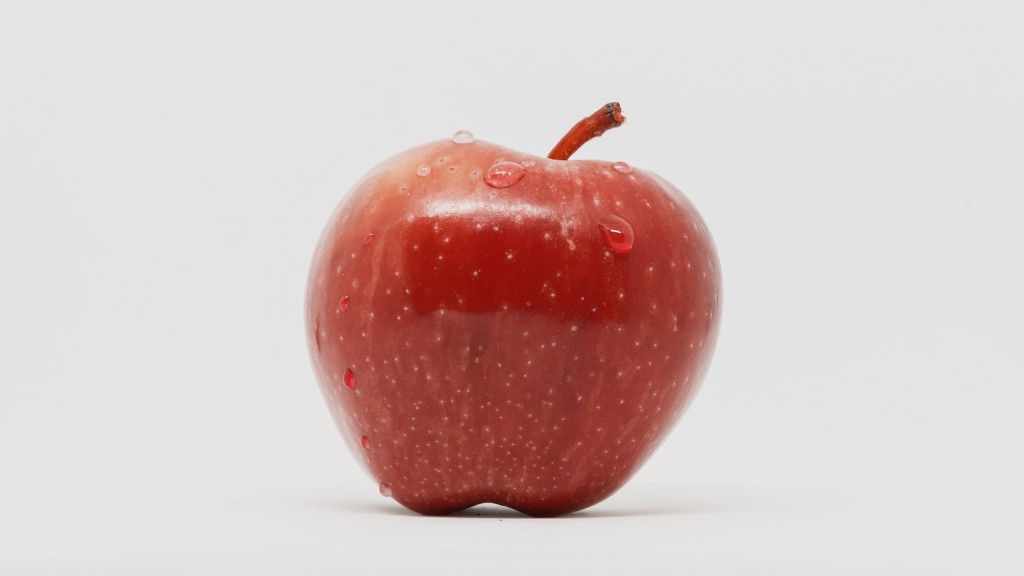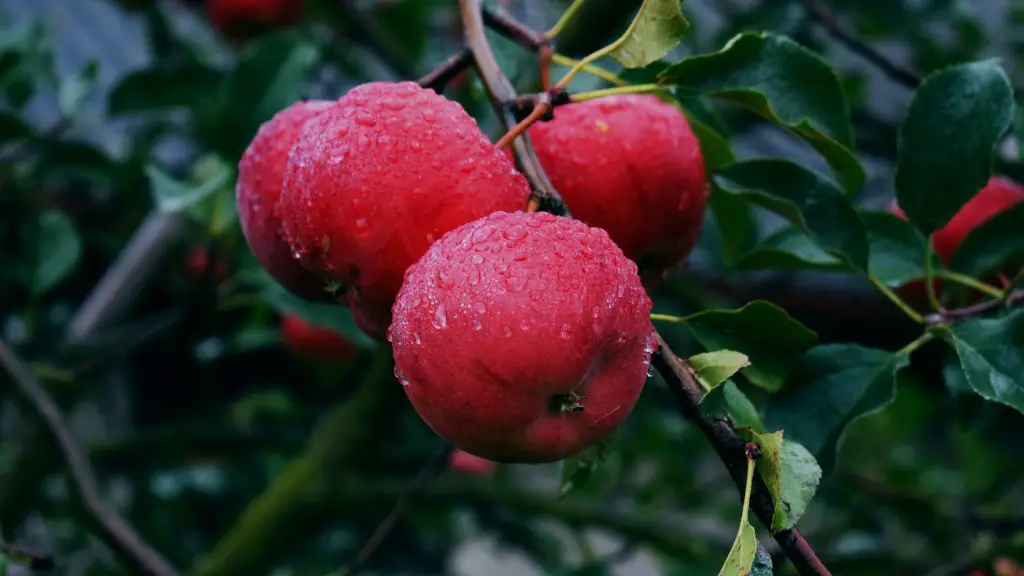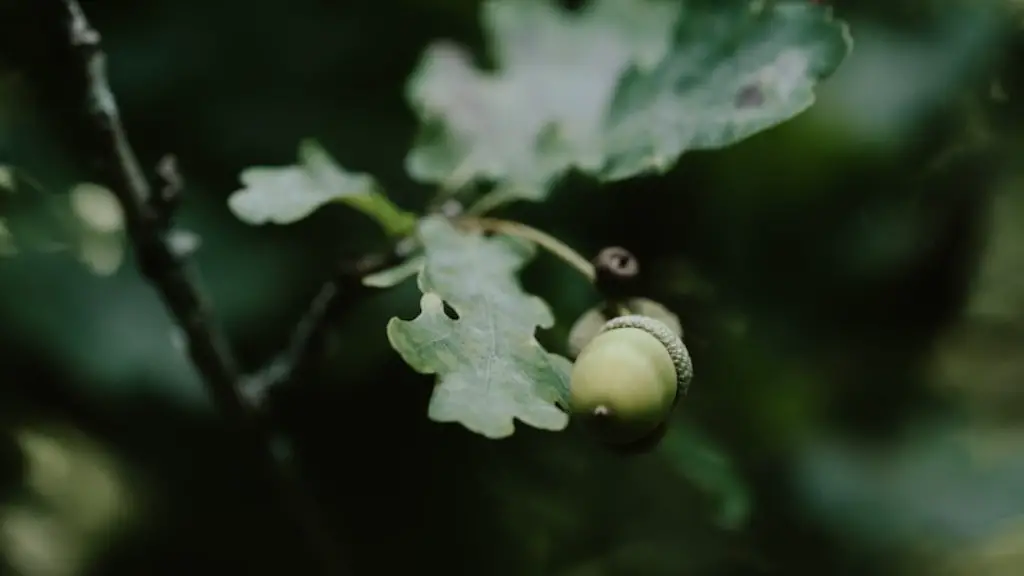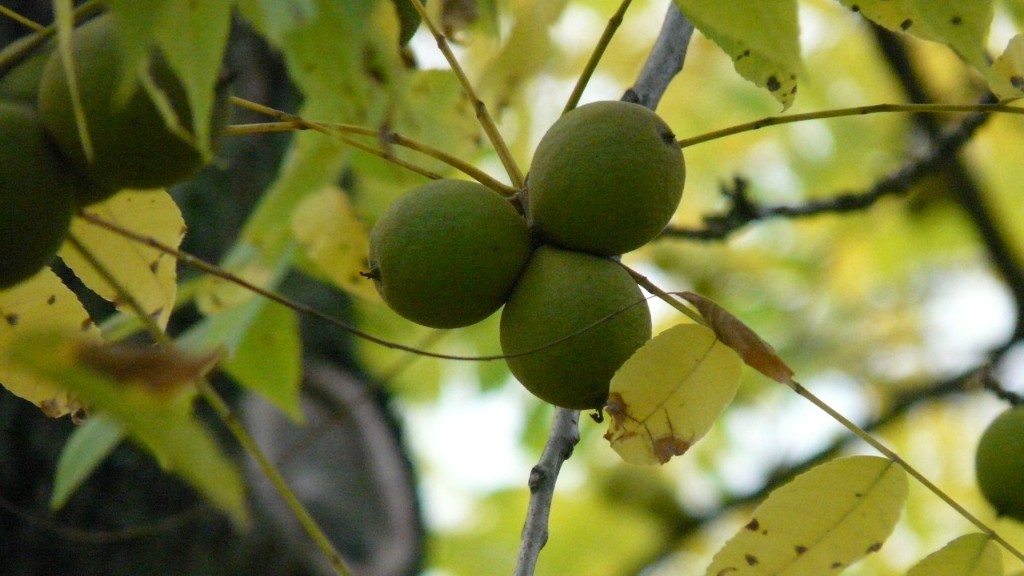Understanding why an apple tree is not blooming can be an issue for many orchard owners. To be successful in identifying the problem, it’s important to inspect the tree and take note of any signs or symptoms that can clue us into the issue. While there are a number of potential causes, some are more prevalent than others. Here’s what you should know about why an apple tree isn’t blooming.
Firstly, apple trees require a certain amount of chill hours to activate the dormancy period in the cold winter months. So a lack of cold winter weather could be the culprit. If the winter has been warmer than normal, and the chill hours are not met, then the tree is likely going to have a delayed bloom and limited fruit production.
Another cause of failed bloom can be improper pruning. Pruning too late or heavily can remove any flowers, which in turn may prevent fruit production. Additionally, improper pruning can cause an overgrowth of foliage and reduce sunlight as well as air circulation which reduces blooms as well.
Thirdly, a lack of nutrition can be detrimental to fruit production. Apple trees need the right balance of nitrogen, phosphorus, and potassium, among other essential micronutrients, to ensure healthy flowering and successful fruit set. If the tree isn’t growing and the buds are not developing, then this could be a sign that the tree isn’t getting enough of the necessary nutrients.
Fourthly, root damage or disease can also cause a lack of bloom. Root rot, as well as pests like gophers and voles, can damage the root system and limit the tree’s ability to absorb and transport nutrients. This in turn can cause stunted or limited growth, as well as poor or no flower production.
Finally, an apple tree that’s planted too deeply can also cause lack of flowering. Trees that are planted too deeply will not be able to grow properly and could suffer from root and crown rot. This leads to poor growth and poor fruit production.
Temperature Concerns
The temperature of the winter weather is a major factor in determining why an apple tree isn’t blooming. If there’s a lack of cold winter weather, then the chill hours requirement won’t be met. And if the chill hours requirement isn’t met, then the tree likely won’t bloom properly and fruit production could be limited.
The chill hours requirement varies by apple variety. Some varieties may be more hardy, and require fewer chill hours, while other varieties may require more. It’s important to do research on the particular variety of apple tree that you have to determine the chill hour requirement.
Additionally, cold winter weather isn’t the only temperature concern. It’s also important to make sure your apple tree isn’t exposed to excessive temperatures at bloom time. If there are extreme temperatures when the tree is blooming, then the flowers may abort, leading to poor fruit production.
Pruning Dangers
Improper pruning can also be a major factor in why an apple tree isn’t blooming. It’s crucial to prune the apple tree properly, at the right time of year. Pruning at the wrong time of year can remove flowers, as well as reduce the amount of sunlight and air circulation the tree receives.
Overshooting can also be a problem. Pruning too deeply or too aggressively can damage the tree. It’s best to prune when the tree is dormant and remove no more than one-third of the living tissue. This helps ensure that the canopy of the tree is open, allowing for adequate sunlight and air circulation.
Additionally, certain pruning techniques can help with fruit production. For instance, v-pruning can help stimulate growth and flower production. This technique entails pruning fruits and branches so that it forms a v-shaped canopy.
Lastly, it’s important to take note of which branches to prune. Branches that are dead should be removed, as they are not going to produce flowers or fruit. And, if the shoots are crossing over, then they should be pruned away to allow for proper air circulation within the tree.
Fertilizing Needs
Apple trees require the right amount and a proper balance of nutrients in order to bear fruit. Without the necessary nutrients, including nitrogen, phosphorus and potassium, the tree won’t produce blooms. Additionally, essential micronutrients like magnesium, calcium, and iron can also be beneficial in promoting bloom and fruit production.
It’s important to contact a soil testing clinician to get the soil tested. This will inform you of the soil’s nutritional content and give you an idea of how to fertilize. A soil test will also let you know if your tree needs to be fertilized with specific nutrients, like sulfur and magnesium.
If the tree needs to be fertilized for the first time, then it’s important to use an appropriate fertilizer. Start with a low-dose fertilizer and work your way up, depending on the results of the soil test. It’s important to follow the instructions on the bag, as applying too much fertilizer can kill the tree.
Apple trees often require fertilizer multiple times throughout the year. It’s important to re-fertilize as blooms form. Too little fertilizer will cause a lack of fruit production and too much can stunt growth and damage the tree.
Checking For Pests and Diseases
It’s important to check for pests, diseases and damage to the roots to identify why an apple tree isn’t blooming. Root rot and pest damage can prevent proper growth and limit root absorption of nutrients. Additionally, pipe root nematodes and apple scab virus can cause stunted growth and destroy blooms, thereby reducing fruit production.
It’s important to inspect the root system when inspecting for pests and disease. If you notice any signs of root rot or damage, then it’s best to contact a tree care specialist. Root issues should not be taken lightly, as left untreated, the tree could die.
It’s also important to inspect the tree for pests, including gophers and voles, which can cause serious damage to the root system. Additionally, birds and other wildlife can strip the flowers, causing a lack of fruit production. It’s important to take preventative measures and address any pest issues before they become a major problem.
Assessing the Planting Site
The planting site can also be a major factor in why an apple tree isn’t blooming. It’s important to make sure the tree is planted in a sunny spot that has good soil drainage. Planting the tree in a partial shade spot, or in soil that doesn’t drain well, can prevent bloom and lead to root issues.
Additionally, it’s important to make sure the tree is planted at the correct depth. Apple trees should be planted with the root crown ½ to 1 inch above the surface of the soil. If the tree is planted too deeply, it may suffer from root and crown rot.
It’s important to make sure the tree is planted in a spot that is away from alleyways, buildings and power lines. This will prevent overhead protection from the elements and create a safe, secure environment for the tree. Additionally, it’s important to make sure the tree is pruned correctly and that the lower branches are exposed to sunlight.
Analyzing Problems
If all of the above has been taken into consideration and you still can’t detect a reason why your apple tree isn’t blooming, then it may be due to an unknown issue or a combination of several problems. In this case, it’s best to consult with a specialist who can analyze the tree and provide insight on what the issue may be.
The specialist can take note of any signs and symptoms and provide advice on how to proceed further. This can help you identify the underlying problem and then determine the best course of action to take. This may involve fertilizing, pruning, or treating diseases and pests.
Ultimately, understanding why an apple tree isn’t blooming can be a challenging endeavor. To be successful, it’s important to inspect the tree and take note of any signs or symptoms. Additionally, it’s important to take into account temperature, pruning, fertilizing, pest and disease issues, and the planting site.





